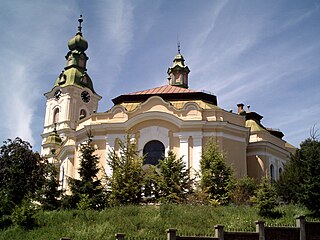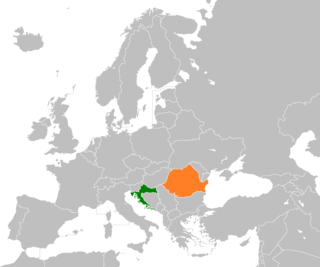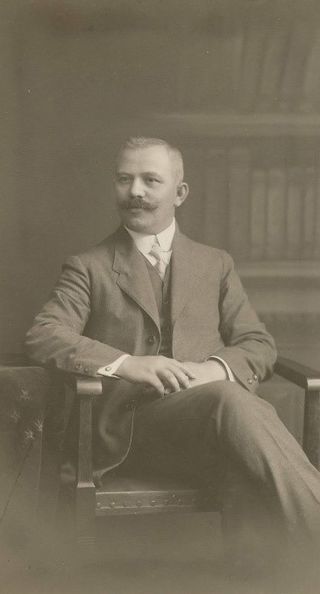
Transylvania is a historical and cultural region in Central Europe, encompassing central Romania. To the east and south its natural border is the Carpathian Mountains and to the west the Apuseni Mountains. Broader definitions of Transylvania also include the western and northwestern Romanian regions of Crișana and Maramureș, and occasionally Banat. Historical Transylvania also includes small parts of neighbouring Western Moldavia and even a small part of south-western neighbouring Bukovina to its north east. The capital of the region is Cluj-Napoca.

Timișoara is the capital city of Timiș County, Banat, and the main economic, social and cultural centre in Western Romania. Located on the Bega River, Timișoara is considered the informal capital city of the historical Banat. From 1848 to 1860 it was the capital of the Serbian Vojvodina and the Voivodeship of Serbia and Banat of Temeschwar. With 250,849 inhabitants at the 2021 census, Timișoara is the country's fifth most populous city. It is home to around 400,000 inhabitants in its metropolitan area, while the Timișoara–Arad metropolis concentrates more than 70% of the population of Timiș and Arad counties. Timișoara is a multicultural city, home to 21 ethnic groups and 18 religious denominations. Historically, the most numerous were the Swabian Germans, Jews and Hungarians, who still make up 6% of the population here.

Sălaj County is a county (județ) of Romania, located in the north-west of the country, in the historical regions of Crișana and Transylvania. It is bordered to the north by Satu Mare and Maramureș counties, to the west and south-west by Bihor County, and to the south-east by Cluj County. Zalău is the county seat, as well as its largest city.

Banat is a geographical and historical region that straddles Central and Eastern Europe. It is currently divided among three countries: the eastern part lies in western Romania ; the western part of Banat is in northeastern Serbia ; and a small northern part lies within southeastern Hungary.

Turda is a city in Cluj County, Transylvania, Romania. It is located in the southeastern part of the county, 34.2 km (21.3 mi) from the county seat, Cluj-Napoca, to which it is connected by the European route E81, and 6.7 km (4.2 mi) from nearby Câmpia Turzii.

Zalău (Romanian pronunciation:[zaˈləw], unofficial and former official name: Romanian: Zălau is the seat of Sălaj County, Romania. In 2021, its estimated population was 52,359.

The Democratic Alliance of Hungarians in Romania is a political party in Romania which aims to represent the significant Hungarian minority of Romania.

Gyula is a town in Békés County, Hungary. The town is best known for its Medieval castle and a thermal bath. Ferenc Erkel, the composer of the Hungarian national anthem, and Albrecht Dürer the Elder, the father of Albrecht Dürer, were also born in Gyula.

The Székely Land or Szeklerland is a historic and ethnographic area in present-day Romania, inhabited mainly by Székelys, a subgroup of Hungarians. Its cultural centre is the city of Târgu Mureș (Marosvásárhely), the largest settlement in the region.

Timișoara Traian Vuia International Airport is an international airport serving Timișoara, Romania. Located in the historical region of Banat, the airport is named in honor of Traian Vuia, a Romanian flight pioneer and a Timiș County native. It is the fourth-busiest Romanian airport in terms of air traffic and the main air transportation hub for the western part of Romania and for the Danube–Criș–Mureș–Tisa Euroregion.

The Germans of Romania represent one of the most significant historical ethnic minorities of Romania since the late modern period onwards.

The Second Vienna Award, also known as the Vienna Diktat, was the second of two territorial disputes that were arbitrated by Nazi Germany and Fascist Italy. On 30 August 1940, they assigned the territory of Northern Transylvania, including all of Maramureș and part of Crișana, from Romania to Hungary.

British–Romanian relations are bilateral foreign relations between United Kingdom and Romania. Both countries established diplomatic relations in 1880. Both countries are members of NATO. The United Kingdom has an embassy in Bucharest and Romania has an embassy in London. Romania also has two consulates general in Edinburgh and Manchester. Romania also has five honorary consulates based in Leeds, Newcastle, Inverness, Liverpool and Bristol. Romania has a cultural institute in London.

Croatia–Romania relations are the foreign relations between Croatia and Romania. Both nations are members of the European Union and NATO. Both countries established relations on 29 August 1992.

Club Atletic Oradea (Nagyváradi Atlétikai Club) (Romanian pronunciation:[ˌklubaˈtletikoˈrade̯a]), commonly known as CA Oradea (Nagyváradi AC), or simply as CAO (NAC), is a Romanian football club based in Oradea, Bihor County, which competes in the Liga IV.

Romania–Serbia relations are the bilateral relations between Romania and Serbia. Both Eastern European countries sharing a border, Romania and Serbia established diplomatic relations on April 19, 1841. Both countries are members of the Council of Europe and the Organization for Security and Co-operation in Europe.
The Romanians in Hungary constituted a small minority. According to the most recent Hungarian census of 2011, the population of Romanians was 35,641 or 0.3%, a significant increase from 8,482 or 0.1% of 2001. The community is concentrated in towns and villages close to the Romanian border, such as Battonya, Elek, Kétegyháza, Pusztaottlaka and Méhkerék, and in the city of Gyula. Romanians also live in the Hungarian capital, Budapest. As of 2011, Romanians constitute one of the largest foreign communities in the country.

Ion Lapedatu was finance minister of Romania (1926-1927), Governor of the National Bank of Romania (1944-1945), and honorary member of the Romanian Academy.

Aurel Cosma was a Romanian lawyer and politician. A leader of the National Party in Timișoara before World War I, Cosma was a representative of the Banat in the Great National Assembly of Alba Iulia that voted for the Union of Transylvania with Romania on 1 December 1918.

The Trianon Treaty Day is a public holiday in Romania celebrated every 4 June to commemorate the signing of the Treaty of Trianon in 1920. The holiday was first proposed in 2015 by the Romanian politician Titus Corlățean and subsequently promulgated on 18 November 2020 by President Klaus Iohannis.























